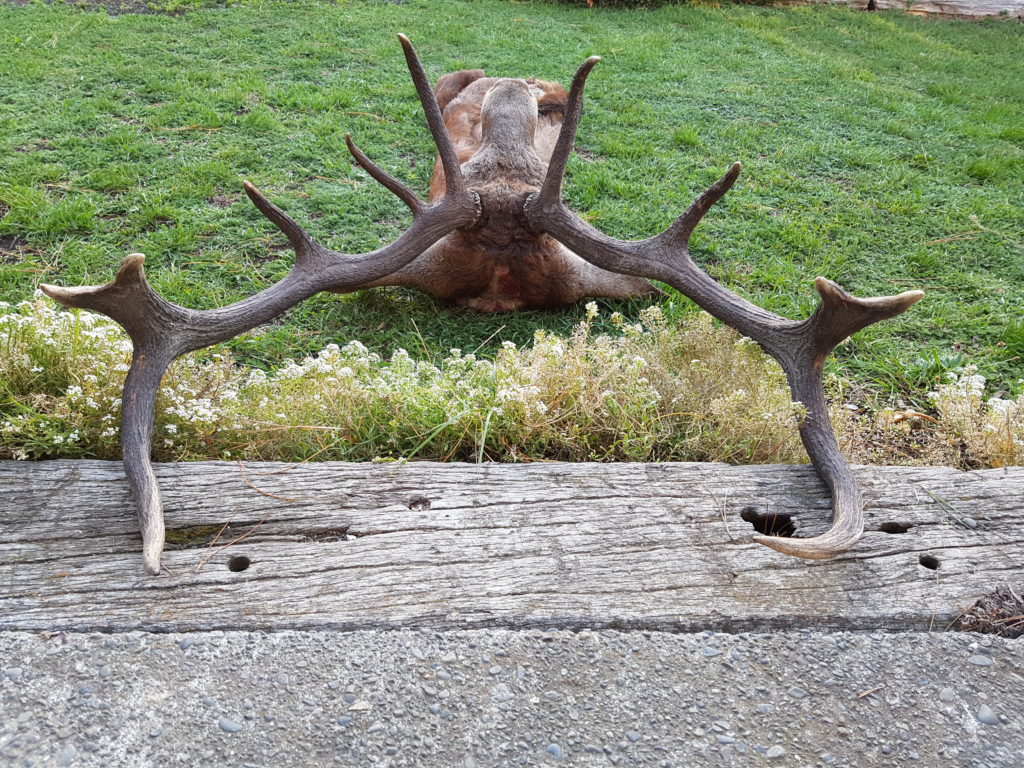If you have always dreamed of shooting a 500-inch red stag with double drop tines and 20 points a side, this is probably not the article for you. If you want a real hunting adventure for a proper stag, read on…
There is probably no other species that has as much confusion and controversy surrounding it than the red stag. I hope to give an overview of the history of red deer in New Zealand and help people better understand what they can expect from a stag hunt here.
Red deer are native throughout Europe and were liberated multiple times across New Zealand during the late 1800s and early 1900s. The original liberations were from English and Scottish stock. During the early days red deer were protected, enabling the numbers to increase; then hunting was slowly opened up, with seasons and tag restrictions like most modern countries.
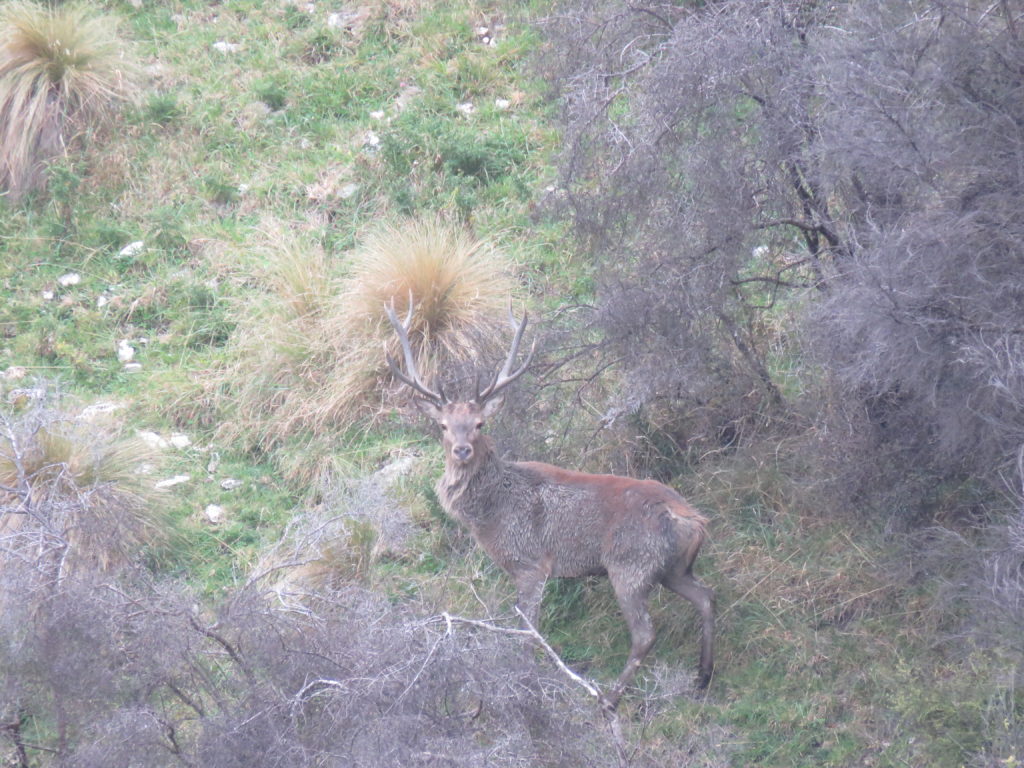
Early Days
The early days of red deer hunting in New Zealand were good, as the animals spread rapidly throughout the country. Unlimited feed and no competition or predators produced some truly massive trophies; the best the world has seen. There were good trophies produced in both the North and South Islands taken at first by wealthy New Zealanders and British hunters willing to traverse the Indian Ocean. The trophies from this era showed the maximum genetic potential of the herds.
Enter the Age of the Deer Culls
By the 1930’s the deer numbers were approaching very high levels. With worries from the government about erosion, and farmers trying to compete with the deer menace, something had to be done. The Department of Internal Affairs took over the job and employed ground shooters tasked with eliminating the deer. WWII was a setback, as most of the men conducting these operations left to fight. By 1956 roughly 700,000 deer had been shot by government cullers, and private hunters had taken a similar number for tail and skin bounties.
The 1960s saw a change toward commercial recovery of deer carcasses, as markets were found across Europe for venison. The availability of helicopters to commercial hunters in the 1970s all but ended the deer menace. 1080 (sodium fluoroacetate), along with aerial meat hunters, quickly reduced the deer populations to levels well below what was previously possible with ground shooting efforts.
The 1970s also saw the birth of a new industry which has become very important to the international hunter: deer farming. The pioneers of deer farming in NZ sought out and captured wild stock with varying methods and success – from “bulldogging” (men dropping from helicopters onto deer, wrestling them to the ground) to net-gunning and everything in between. Soon we had self-sustaining herds behind wire to meet the growing venison market in Europe and a velvet market in Asia. New Zealand soon became the world leader in deer farming practices and techniques due to a few remarkable individuals and an already strong sheep and cattle farming industry.
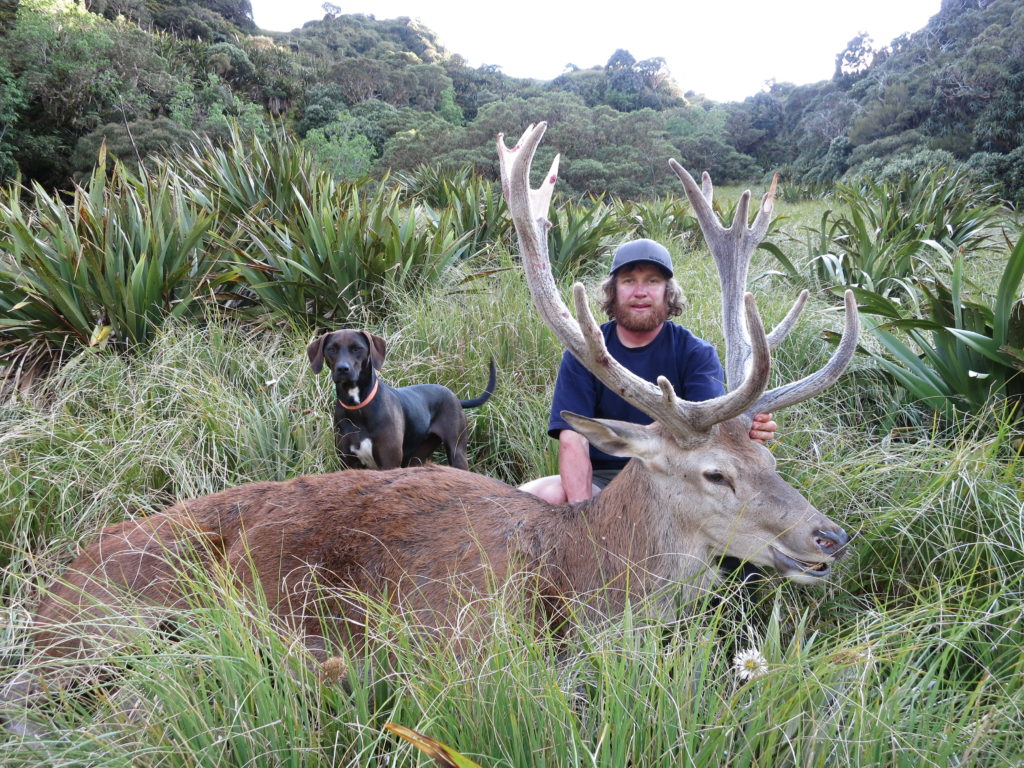
The Modern Era
So what’s the story today?
At present we have good populations of wild red deer throughout the public land of New Zealand, good numbers across large areas of private farmland, and a strong deer farming industry.
High Fences
The deer farming industry originally focused on venison and velvet production, but in recent times we have seen a huge increase in game estates/trophy parks. Deer farmers began cross-breeding red deer to increase both body weights and velvet production. Cross-breeding with elk is common, and there have been a number of imported strains of red deer from across Europe. The results have been amazing. In a very short time, the body and antler sizes of farmed stags have increased dramatically.
I am not going to go into too much detail about high fence hunting, as there are some very differing views about how it should be conducted, and “ethical” and “free range” seem to be very subjective and emotional terms these days. But this is a world of big stags and even bigger money. There are many misconceptions about these animals, but if a stag is pushing 350 inches, the chances are that he has spent at least some of his life behind wire. There are truly massive stags out there approaching 800+ inches of antler; I’ll let you decide whether they are a game animal or not…

Free Range
To me there is one natural state of an animal and that is wild, born and bred. This is the type of stag I will reference from here on out. Red deer are the most widespread and commonly-hunted game animal in New Zealand and they are found in a huge variety of terrain and habitat types, from dense forests and farmland to the alpine mountain ranges above. Hunters typically pursue stags by “bush stalking” (still hunting), spot and stalk, or calling, depending on the terrain and season.
So what can you expect from a real, free-range red stag? A stag will reach his potential somewhere in the 6-8 year age bracket and should be carrying 10-16+ points. There is a large variation in the shape and size of stags throughout the country, and the increase in farmed deer releases (both accidental and “accidental”) results in a few random stags that do not match the traditional genes of the area.
What you are looking for is a 12-point (6×6) or better stag with length and spread around the 40” mark. This is the basis for a typical 300-inch red, which is the goal of the New Zealand free-range international hunter. This is using the Douglas scoring system, which is the South Pacific’s measuring system and is very similar to Boone and Crockett, though does not have a non-typical category so it’s based heavily on symmetry. Red deer antlers are very similar in structure to elk antlers. You will notice the main difference is a crown, formed by the top tines.
How To Get A 300” Free-Range Stag!?
This is the hard question. Just in the last few years the public land hunting for stags has been very good, and some legitimate 300+ reds have come off public land. This is, in part, related to reduced venison prices, removing some of the incentive from helicopter operators and changing many Kiwis’ hunting attitudes. But finding 300” red stags on public land is very challenging, and there are few guides that will take on such a hunt. By and large, the majority of guided red deer hunting here happens behind high fences or on managed private land — for good reason. Public land can be unpredictable and faces huge uncontrolled hunting pressure during the “roar” (rut).
Good stags can be found on both the North and South Island, and most outfitters will offer high-fence hunting and some free-range as well. A North Island hunt will typically take place in hill country, with native forests. The South Island terrain is more mountainous and open. Both can produce good trophies despite the differences in surroundings. If you want a serious mountain adventure, look for South Island operators that specialise in true free-range hunting and you will not be disappointed. The free-range stags of New Zealand are waiting for you, with more quality opportunities than ever before.
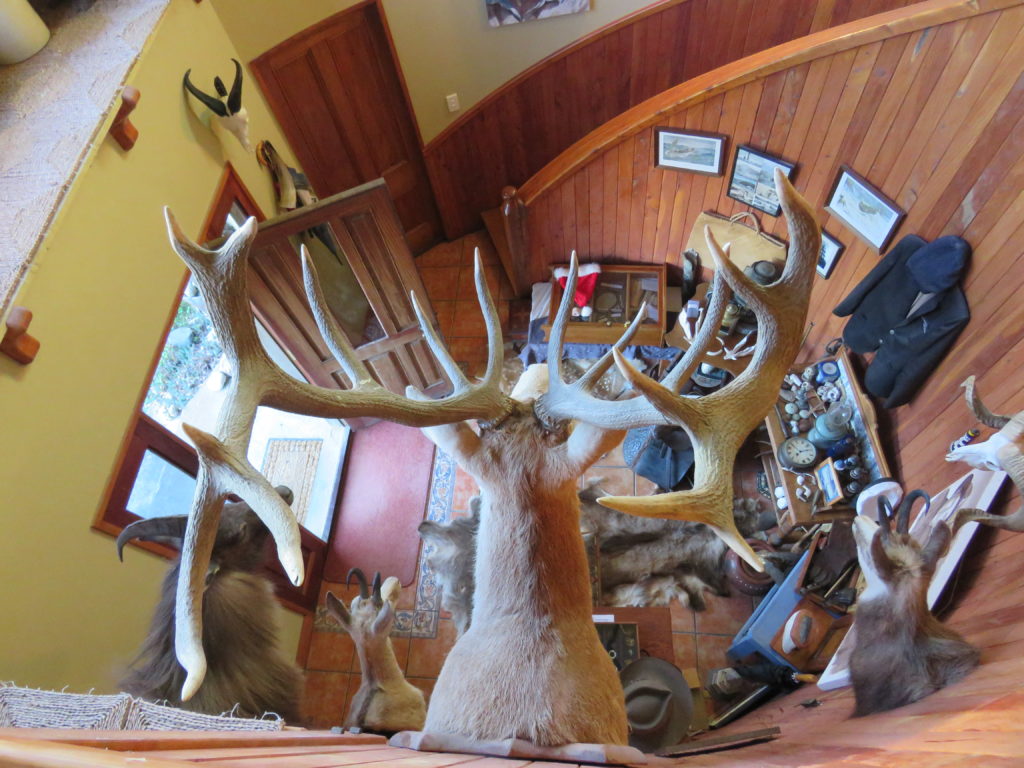
When Should I Book My Hunt?
Most stag hunting will be focused around the roar, from late March through April. Roaring stags can be hunted in a similar way to bugling elk, and calling an aggressive stag into bow range is an awesome experience.
Hunting during the roar on public land can be very difficult, with heavy hunting pressure and no restrictions on numbers of hunters or animals taken in most areas. If you do wish to hunt public land during the roar, I strongly suggest trying to get away from the crowd (helicopter drop-off can be a good idea) and wearing high-visibility clothing. Although not required, wearing blaze orange or blue has become popular with hunters for good reason. As always, ensure you identify your target beyond all doubt. Most guides operate on private land for these reasons.
Early season hunting, from January to early March, can also be good. Like mule deer and elk, the stags are often found high above treeline, fattening up before the roar. I would wait until February to ensure that the stags are in hard velvet or starting to strip. Some older stags will come into hard antler earlier, but I think it’s best to ensure they are well and truly ready to strip, as summer temperatures can quickly ruin a soft velvet head.
Hunting during the winter is another option as stags are hungry to feed after the roar. But stags can be difficult and random to find during this time.
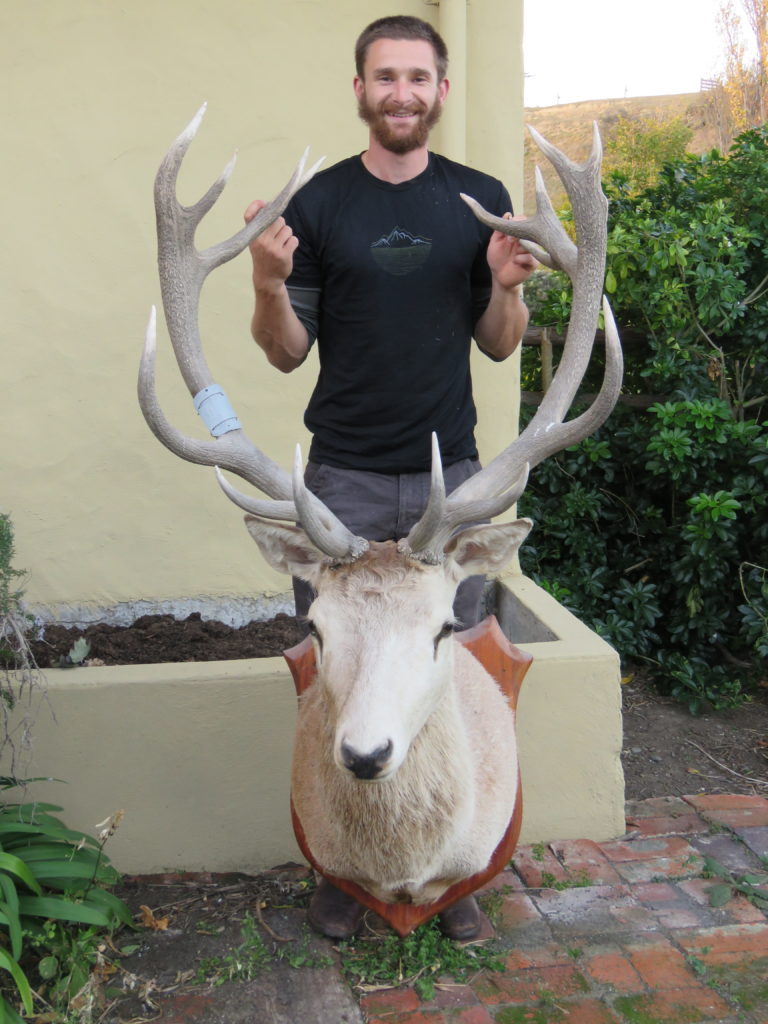
A Note on Elk
You will have no doubt seen some elk hunts offered by NZ outfitters.
There is only one true free-ranging wild herd of wapiti in New Zealand, descended from Rocky Mountain Elk released in 1905. These animals were released into Fiordland, the most south western tip of the south island. During the early 1900s, this herd produced some amazing trophies in the 400” class.
This herd has slowly been contaminated by red deer, and the remaining animals are a unique hybrid — the “New Zealand Wapiti.” This interbreeding, combined with mismanagement and over-hunting, has been detrimental to the trophy quality of this unique herd.
The hunting of these animals is now controlled by the Fiordland Wapiti Foundation (FWF), who have split the wapiti area into blocks and run a ballot to hunt these areas over the bugle. The FWF also runs culling operations in an effort to reduce red deer numbers within wapiti range. We are slowly starting to see improvements in the trophy potential of this herd, but it will never be what it was without some drastic changes.
Hunting Fiordland is the Kiwi’s ultimate challenge; the terrain is daunting at best, with steep fiords, impenetrable native forest, and rain that you wouldn’t believe (200-600 inches a year)! There are a few guides here that will take hunters into this area after wapiti, but being successful in the ballot can be difficult and getting a ballot period where the weather is good, even harder. Many outfitters here do offer wapiti hunts in their game parks.
The free-range stags of New Zealand both on private and public land have reached some of the highest numbers in recent history, and as the Kiwi hunting ethos is changing, we are seeing more and more quality stags reaching their potential. Some true monsters have even been appearing outside of the high wire. If you want a real mountain hunting adventure and a great trophy, the time is now!


